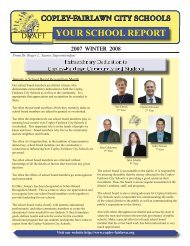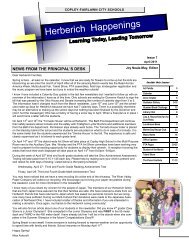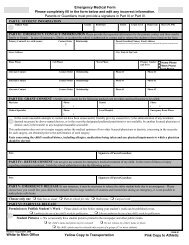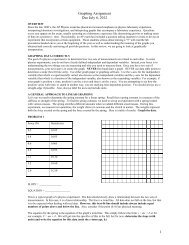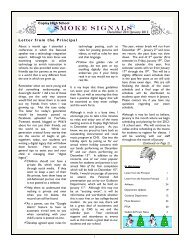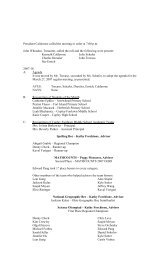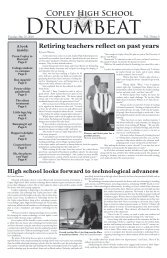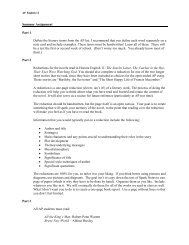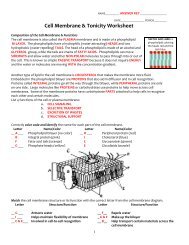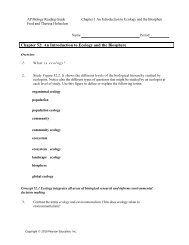Chapter 2: The Chemical Context of Life - Copley-Fairlawn City
Chapter 2: The Chemical Context of Life - Copley-Fairlawn City
Chapter 2: The Chemical Context of Life - Copley-Fairlawn City
Create successful ePaper yourself
Turn your PDF publications into a flip-book with our unique Google optimized e-Paper software.
AP Biology Reading Guide <strong>Chapter</strong> 2: <strong>The</strong> <strong>Chemical</strong> <strong>Context</strong> <strong>of</strong> <strong>Life</strong><br />
Fred and <strong>The</strong>resa Holtzclaw<br />
18. Make an electron distribution diagram <strong>of</strong> water. Which element is most electronegative? Why<br />
is water considered a polar molecule? Label the regions that are more positive or more<br />
negative. (This is a very important concept. Spend some time with this one!)<br />
19. Another bond type is the ionic bond. Explain what is happening in the figure below (2.14):<br />
•••<br />
-<br />
0<br />
20. What two elements are involved above?<br />
21. Define anion and cation. In the preceding example, which is the anion?<br />
22. What is a hydrogen bond? Indicate where the hydrogen bond occurs in this figure.<br />
23. Explain van der Waals interactions. Though they represent very weak attractions, when these<br />
interactions are numerous they can stick a gecko to the ceiling!<br />
Copyright © 2010 Pearson Education, Inc. - 4 -



